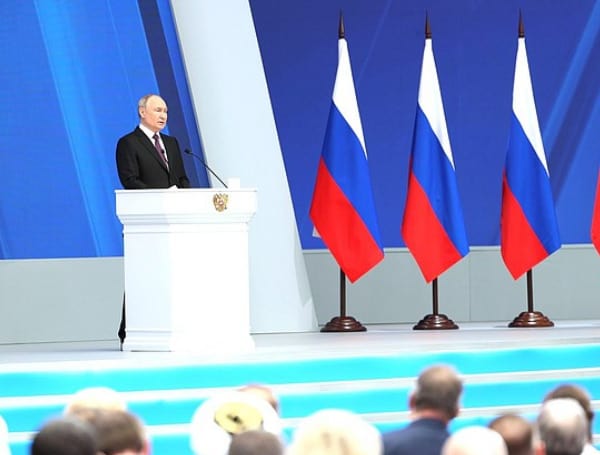Russian President Vladimir Putin (Kremlin) Russian President Vladimir Putin has revised the country’s nuclear doctrine, responding to U.S. Preside
Russian President Vladimir Putin has revised the country’s nuclear doctrine, responding to U.S. President Joe Biden’s recent decision to allow Ukraine to target deep inside Russian territory using American-made ATACMS missiles.
The changes lower the threshold for nuclear weapon use, signaling an escalation in rhetoric as the war in Ukraine nears its 1,000th day.
READ: Ukraine Strikes Deep Inside Russia With US-Supplied Missiles, Marking Escalation In Conflict
Under the updated doctrine, Moscow will treat aggression from any non-nuclear state—if backed by a nuclear power—as a joint attack on Russia. Kremlin spokesperson Dmitry Peskov explained that Russia now reserves the right to use nuclear weapons in response to conventional attacks on Russia or its ally Belarus.
“This is aimed at ensuring potential adversaries understand the inevitability of retaliation,” Peskov said during a briefing.
The revised policy underscores Russia’s continued reliance on nuclear deterrence while expanding the scenarios that could trigger a nuclear response. It specifically identifies Belarus as equally protected under Moscow’s updated rules.
READ: Russia Responds With Threats Over U.S. Authorization Of Ukrainian ATACMS Strikes
The revision follows reports that Ukraine used U.S.-provided ATACMS missiles to strike targets in Russia’s Bryansk region, marking the first such use since Biden authorized the weapons. Russia described the U.S. decision as a “dangerous escalation” and accused Biden of exacerbating the conflict.
Putin’s move comes amid heightened tensions, with Russia intensifying missile and drone attacks on Ukrainian infrastructure as winter approaches. Over recent days, strikes have targeted civilian areas in cities like Odesa and Sumy, leaving dozens dead and hundreds injured.
Pattern of Threatening Rhetoric
Russia’s revision fits a longstanding pattern of nuclear saber-rattling since its full-scale invasion of Ukraine in February 2022. Similar warnings accompanied Western military aid, including F-16 fighter jets, Patriot air-defense systems, and tanks. However, the doctrine update adds a new layer of credibility to Moscow’s threats, signaling to Ukraine’s Western backers the risks of escalation.
In September, Russia had already hinted at lowering the bar for nuclear weapon use, suggesting Moscow could respond to any “critical threat to its sovereignty.” Tuesday’s decree formalizes these changes, explicitly tying attacks by non-nuclear states supported by nuclear powers to potential nuclear retaliation.
READ: Russia Deploys Decoy And Thermobaric Shahed Drones To Overwhelm Ukrainian Air Defenses
U.S. Policy Shift and Political Transition
Biden’s decision to approve ATACMS use comes as his presidency winds down, with President-elect Donald Trump set to take office in two months. Trump has pledged to end the Ukraine war quickly, though his approach remains unclear. His son, Donald Trump Jr., criticized Biden’s move, accusing the “Military Industrial Complex” of escalating tensions before his father could “create peace.”
The policy change adds complexity to U.S.-Russia relations during the transition, as Moscow weighs its response to an incoming administration that may adopt a different stance on Ukraine.
Please make a small donation to the Tampa Free Press to help sustain independent journalism. Your contribution enables us to continue delivering high-quality, local, and national news coverage.
Android Users: Download our free app to stay up-to-date on the latest news.
Connect with us: Follow the Tampa Free Press on Facebook and Twitter for breaking news and updates.
Sign up: Subscribe to our free newsletter for a curated selection of top stories delivered straight to your inbox.

